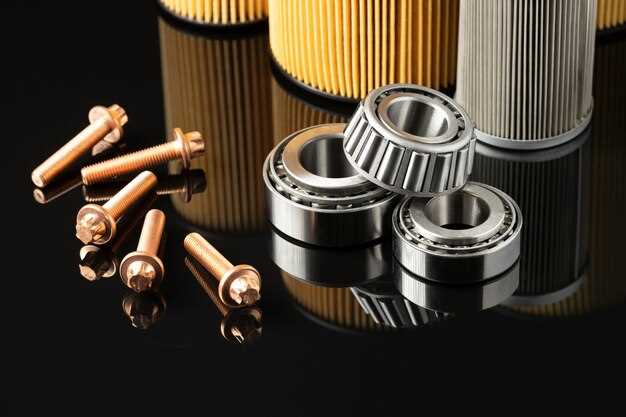
OEM vs aftermarket parts – which is better?

When it comes to maintaining and repairing your vehicle, one of the most important decisions you’ll face is choosing between OEM (Original Equipment Manufacturer) parts and aftermarket parts. Each type of component has its own set of advantages and disadvantages, making it essential to understand their differences before making a choice.
OEM parts are manufactured by the same company that produced the original parts in your vehicle. This ensures a perfect fit and compatibility, as they are designed to meet the exact specifications and standards set forth by the manufacturer. Many vehicle owners appreciate the assurance of quality and reliability that comes with OEM parts, especially when considering the long-term performance of their vehicles.
On the other hand, aftermarket parts are produced by third-party companies and may offer more affordable options for repairs and replacements. While some aftermarket components can be of high quality, there is a significant variation in standards, which may affect their performance and longevity. Therefore, understanding the reputation of the manufacturer and reading reviews is crucial when opting for aftermarket parts.
The decision between OEM and aftermarket parts ultimately hinges on your individual priorities, whether it’s cost savings, reliability, or originality. Assessing your needs and weighing the pros and cons of each option will guide you to make the best choice for your vehicle.
OEM or Aftermarket Parts: Which One Should You Choose?
When it comes to vehicle maintenance and repairs, choosing between OEM (Original Equipment Manufacturer) and aftermarket parts can be a crucial decision. Each option has its distinct advantages and drawbacks depending on various factors such as quality, price, and availability.
Understanding OEM Parts

OEM parts are made by the same manufacturer that produced the original components for your vehicle. Here are some key points about OEM parts:
- Quality Assurance: OEM parts typically meet the standards set by the car manufacturer, ensuring compatibility and performance.
- Warranty: Many OEM parts come with a warranty, providing peace of mind for consumers.
- Direct Fit: They are designed specifically for your vehicle model, which means they require no modifications for installation.
Exploring Aftermarket Parts
Aftermarket parts are produced by third-party manufacturers and can vary widely in quality and price. Here are some points to consider:
- Cost-Effectiveness: Aftermarket parts are often less expensive than OEM parts, making them an attractive option for budget-conscious consumers.
- Variety: There is a vast array of aftermarket options available, allowing car owners to select parts that match their needs, whether for performance or aesthetics.
- Potential Quality Variability: The quality of aftermarket parts can range from excellent to subpar, so thorough research is necessary.
Factors to Consider
When deciding between OEM and aftermarket parts, consider the following factors:
- Budget: Assess your financial situation. Aftermarket parts may save you money upfront, but their longevity should also be factored in.
- Vehicle Age: For older vehicles, aftermarket parts might be more readily available and economically feasible.
- Repair Necessity: For essential repairs, OEM parts can ensure that your vehicle runs optimally, especially for safety components.
- Installation: If you plan to do the repairs yourself, ensure that the parts are compatible and straightforward to install.
Ultimately, the decision between OEM and aftermarket parts depends on your specific situation, preferences, and long-term goals for your vehicle. Consider all these factors carefully to make an informed choice that aligns with your needs.
Cost Comparison: OEM vs. Aftermarket Parts
The decision between OEM (Original Equipment Manufacturer) and aftermarket parts can significantly affect your repair budget. Generally, OEM parts tend to be more expensive due to their guaranteed quality and direct connection with the vehicle manufacturer. These parts are made to fit your specific vehicle model and often come with a warranty, providing peace of mind regarding their reliability.
In contrast, aftermarket parts usually offer a more budget-friendly option. They are produced by third-party manufacturers and can vary greatly in quality. While some aftermarket parts match or exceed OEM specifications, others may fall short, impacting their overall performance and longevity. Costs for aftermarket parts often range from 20% to 70% less than their OEM counterparts, making them an attractive choice for those looking to save money on repairs.
However, the lower price of aftermarket parts can sometimes lead to hidden costs. For instance, if an aftermarket part fails prematurely, you may end up spending more on repeated repairs or replacements. Additionally, some insurance policies may only cover OEM parts, complicating the financial decision further.
Ultimately, the choice between OEM and aftermarket parts will depend on your budget, vehicle’s needs, and personal preferences. While aftermarket parts can provide significant savings, it’s crucial to evaluate their quality and reliability before making a decision.
Quality and Performance: What to Expect from Each Option
When it comes to vehicle maintenance and repairs, choosing between OEM and aftermarket parts can significantly impact quality and performance. OEM (Original Equipment Manufacturer) parts are produced by the vehicle’s manufacturer, ensuring that they meet the exact specifications and standards required for optimal performance. These parts typically provide a perfect fit, durability, and reliability that can maintain vehicle performance close to the original state.
In contrast, aftermarket parts are produced by third-party manufacturers and can vary widely in terms of quality. While some aftermarket options may offer competitive performance and durability, others might not meet the same quality standards as OEM parts. This inconsistency means that buyers must exercise caution and conduct proper research when selecting aftermarket items.
OEM parts often come with a warranty that guarantees their performance over a specified period, giving consumers peace of mind regarding their investment. Aftermarket parts can also have warranties, but the conditions and duration of these warranties can differ significantly between manufacturers. In some cases, using aftermarket parts might void the vehicle’s warranty, which is an essential consideration for vehicle owners.
Furthermore, the choice between OEM and aftermarket can affect long-term performance. While reputable aftermarket parts can enhance specific characteristics, such as performance upgrades or weight reductions, lower-quality components may lead to issues such as improper fits, increased wear, or decreased overall performance. In summary, while OEM parts generally provide reliability and consistency, quality in the aftermarket segment can vary, requiring thorough evaluation by consumers.
Warranty and Support: Understanding Your Rights and Options

When deciding between OEM and aftermarket parts, it is essential to understand the implications of warranty and support on your purchase. OEM parts, provided directly by the original manufacturer, typically come with a warranty that guarantees their functionality and quality. This warranty often covers defects in materials and workmanship for a specified period, giving you peace of mind regarding the part’s reliability.
On the other hand, aftermarket parts may come with varying warranty conditions. Some reputable aftermarket manufacturers also offer warranties, but they might differ significantly in terms of duration and coverage compared to OEM parts. It’s crucial to read the terms and conditions associated with any aftermarket part to fully understand what is covered in case of failure.
In the event of a failure, OEM parts generally offer more straightforward support channels through the manufacturer’s service centers. This ensures that you receive expert assistance directly related to the product in question. However, with aftermarket parts, your options may include contacting different retailers or the aftermarket manufacturer, which can lead to longer resolution times or a lack of support altogether.
Additionally, using OEM parts could potentially affect your vehicle’s warranty if it is still under a manufacturer’s warranty agreement. Many manufacturers mandate the use of OEM parts for repairs to maintain coverage. Conversely, while aftermarket parts can be more affordable, they might void certain warranties if not compliant with the manufacturer’s guidelines.
Ultimately, understanding your rights and options related to warranty and support is essential when choosing between OEM and aftermarket parts. Thoroughly reviewing warranty coverage and assessing the reliability of support offered can significantly influence your decision and future maintenance experiences.